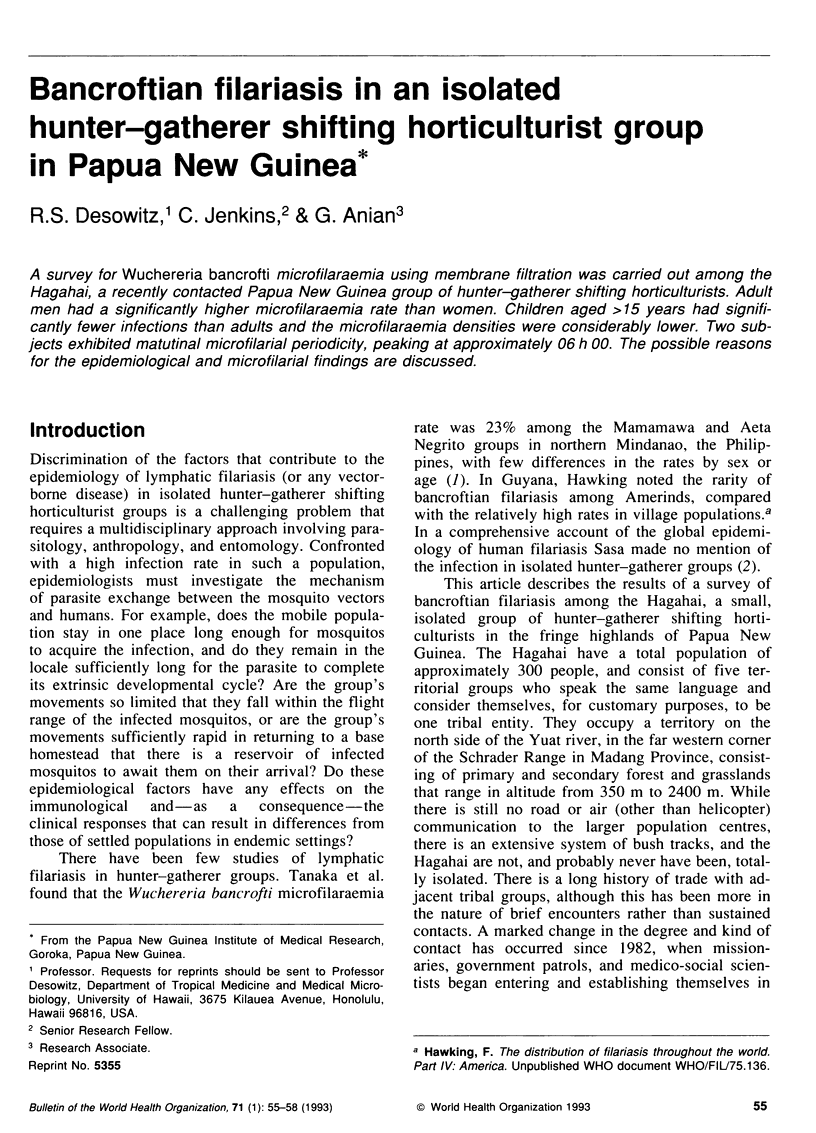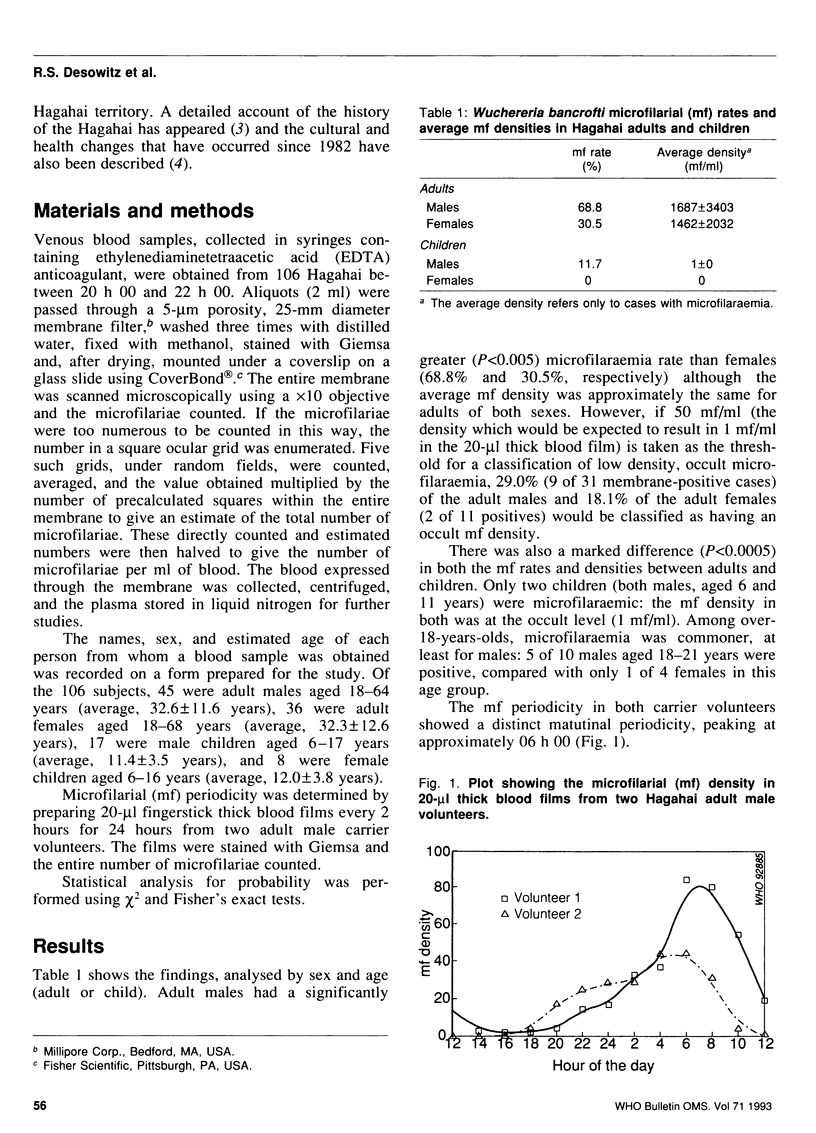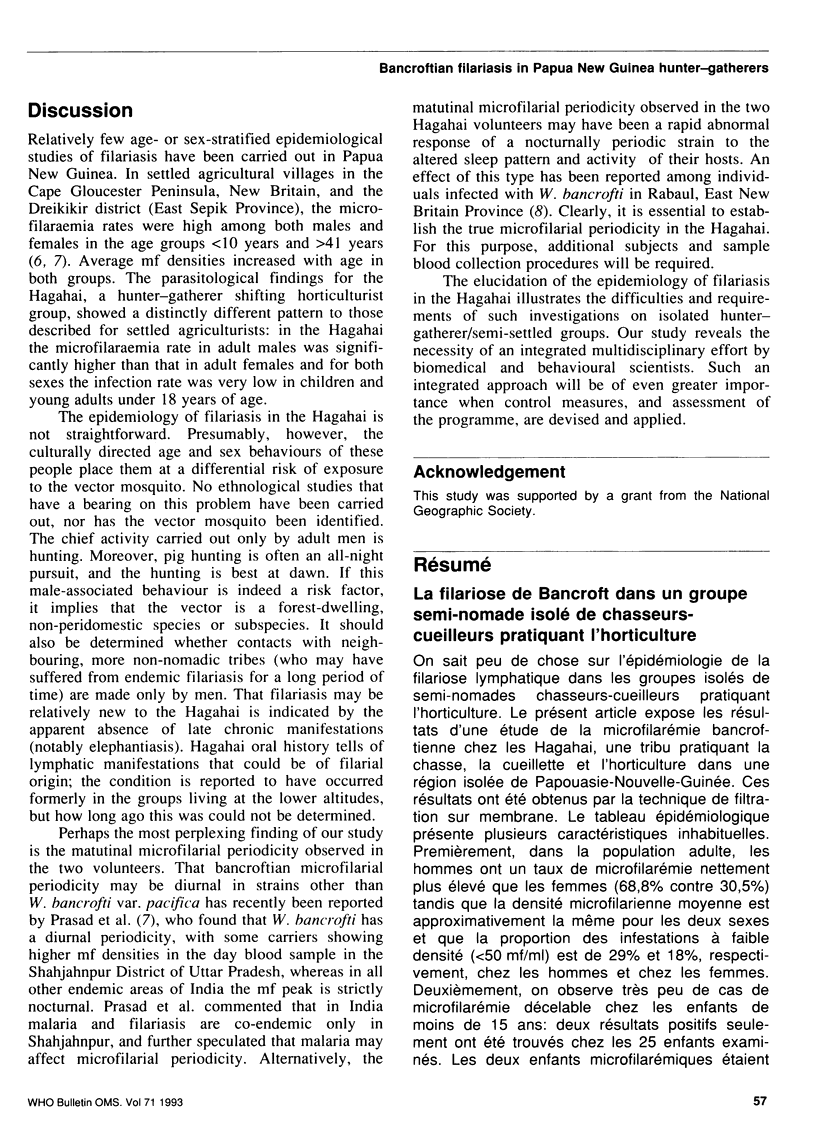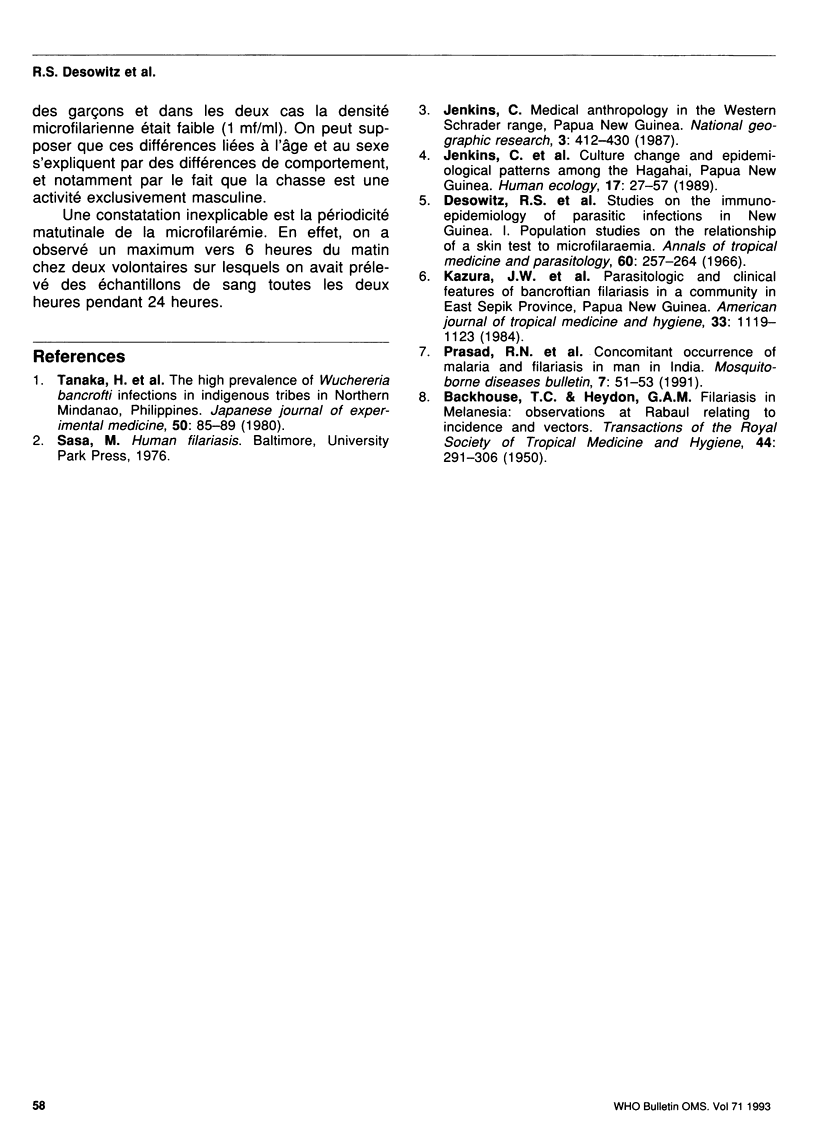Abstract
A survey for Wuchereria bancrofti microfilaraemia using membrane filtration was carried out among the Hagahai, a recently contacted Papua New Guinea group of hunter-gatherer shifting horticulturists. Adult men had a significantly higher microfilaraemia rate than women. Children aged > 15 years had significantly fewer infections than adults and the microfilaraemia densities were considerably lower. Two subjects exhibited matutinal microfilarial periodicity, peaking at approximately 06 h 00. The possible reasons for the epidemiological and microfilarial findings are discussed.
Full text
PDF



Selected References
These references are in PubMed. This may not be the complete list of references from this article.
- BACKHOUSE T. C., HEYDON G. A. M. Filariasis in Melanesia: observations at Rabaul relating to incidence and vectors. Trans R Soc Trop Med Hyg. 1950 Dec;44(3):291–306. doi: 10.1016/0035-9203(50)90056-3. [DOI] [PubMed] [Google Scholar]
- Kazura J. W., Spark R., Forsyth K., Brown G., Heywood P., Peters P., Alpers M. Parasitologic and clinical features of bancroftian filariasis in a community in East Sepik Province, Papua New Guinea. Am J Trop Med Hyg. 1984 Nov;33(6):1119–1123. doi: 10.4269/ajtmh.1984.33.1119. [DOI] [PubMed] [Google Scholar]
- Tanaka H., Nakai H., Omoto K., Shibuya T., Hirai M., Mercado A. S., Pagaran I. G., Eviota W. S. The high prevalence of Wuchereria bancrofti infections in indigenous tribes in northern Mindanao, Philippines. Jpn J Exp Med. 1980 Apr;50(2):85–89. [PubMed] [Google Scholar]


